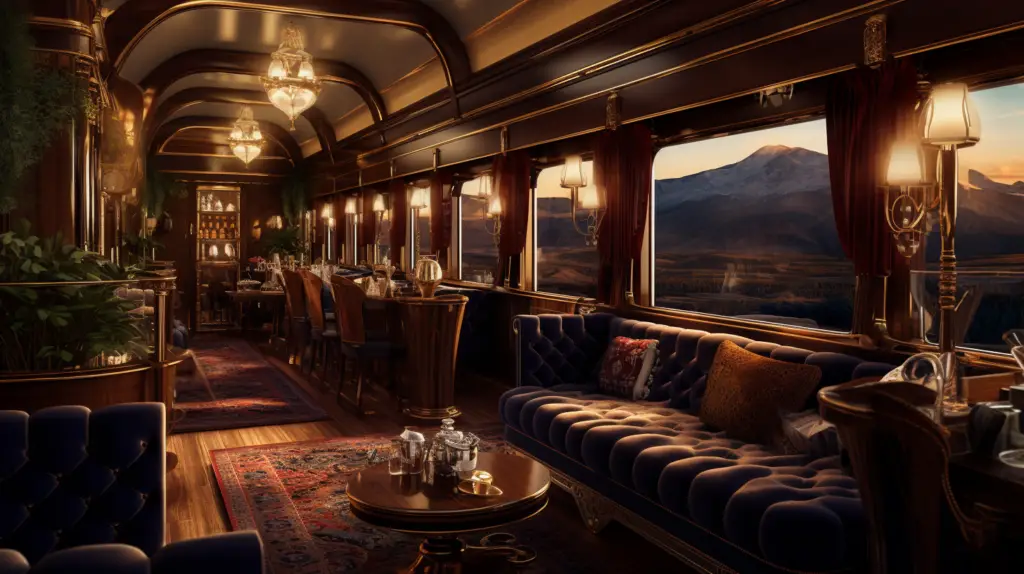A symbol of luxury, mystery, and romanticism, the Orient Express, is a monumental marvel in the history of rail travel. Since its inaugural journey in 1883, the famed locomotive has been an embodiment of lavishness, transporting passengers across Europe’s vast, alluring landscapes. Throughout its intriguing history, the Orient Express has seen the rise and fall of empires, served as a setting for famous literary works, and played host to an array of celebrated personalities. To travel aboard this train is to journey back in time, experiencing the world through the glamorous lens of a bygone era.
Let’s delve into the rich, fascinating history and culture of the Orient Express with these 25 intriguing facts.
1. The Orient Express was inaugurated by Georges Nagelmackers in 1883, the founder of Compagnie Internationale des Wagons-Lits, which specialized in luxury train travel.
2. Despite popular belief, the original Orient Express never traveled to Istanbul (previously Constantinople). It was the Simplon Orient Express, introduced in 1921, which first offered the Paris to Istanbul route.
3. The train’s route has changed many times over the years. Its most extensive coverage included cities like Paris, Vienna, Budapest, Bucharest, and Istanbul.
4. The term “Orient Express” is associated with several trains. It started with the original Express d’Orient and later included others like the Simplon Orient Express, the Arlberg Orient Express, and the Nostalgic Orient Express.
5. The carriages of the Orient Express were known for their unique designs, epitomizing art deco aesthetics and the essence of luxury.
6. Contrary to the opulent visuals, early journeys on the Orient Express were not particularly comfortable. Amenities like heating, sleeping cars, and onboard dining were not introduced until later years.
7. The Orient Express served as a setting for many works of literature and film. Its most famous appearance is arguably in Agatha Christie’s detective novel, “Murder on the Orient Express.”
8. The train ceased operations during World War I and World War II. It was briefly used for the transportation of soldiers and diplomats during these periods.
9. During the Cold War, the Orient Express was one of the few direct links between the West and the Soviet-controlled East.
10. Renowned personalities like Marlene Dietrich, Mata Hari, Graham Greene, and Lawrence of Arabia are believed to have traveled on the Orient Express.
READ MORE: 25 Interesting Facts and Controversies About The Korean War
11. The carriages of the Orient Express were the first to have corridors, which was a revolutionary concept in train travel.
12. King Carol II of Romania was born aboard the Orient Express in 1893.
13. The train’s luxury was so renowned that it was commonly known as “The King of Trains and the Train of Kings.”
14. The final service of the original Orient Express route from Paris to Istanbul was in 1977.
15. Today, a luxury train experience called the Venice Simplon-Orient-Express carries forward the legacy, offering the classic route from London to Venice and occasional trips to Istanbul.
16. It is believed that the famous cocktail “Bloody Mary” was invented in the bar car of the Orient Express.
17. Each original carriage of the Orient Express had a unique number and name, such as “Lalique,” named after the famous glassmaker.
18. The original Orient Express trains didn’t have shower facilities. Passengers were expected to freshen up using onboard washbasins or at hotels during longer stops.
19. The dining cars of the Orient Express were a culinary delight. Meals were prepared fresh on the train by French chefs and served with elegance.
20. The Orient Express had a special “library car” where passengers could read and relax, featuring a selection of European literature.
21. The train was often used for diplomatic missions. It is said that the final drafts of the Treaty of Versailles were completed on board.
22. Not just humans, the Orient Express also transported racehorses and circus animals in specially designed carriages during its early years.
23. Despite the train’s association with luxury, there were budget accommodations available. In the later years, the train also had third-class sleeper cars.
24. The Venice Simplon-Orient-Express still maintains the dress code of the early 20th century, asking passengers to dress in formal evening wear for dinner.
25. An Orient Express museum exists in Istanbul, Turkey, where visitors can explore the train’s rich history and see original carriages and artifacts.
The Orient Express, a beacon of opulence and comfort, continues to inspire and enthrall people worldwide. Its storied past is a testament to its timeless allure, making it not just a mode of transport, but an unforgettable experience in itself. Even today, a journey aboard the Orient Express resonates with the glamour, intrigue, and romance that have always been a part of its legacy.


